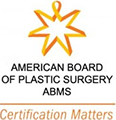Who Gets Breast Cancer?
Breast cancer is the most common cancer in females, affecting one of every nine women who live to eighty years of age. Common risk factors include a personal or family history of breast cancer (especially first degree relatives diagnosed at a younger age), increasing age, increased estrogen levels whether from medications or your body’s production, and above average alcohol consumption. All women should perform monthly self-exams and schedule a mammogram beginning at 40 years of age. If you are diagnosed with breast cancer, the first hours to weeks can be terrifying, but remember that this is most often a curable disease. What follows is a primer on the path to potential cure.
What Happens if I Have It?
Once diagnosed, you and your doctors will team together to formulate a specific plan for your cancer. Breast cancer is treated with a combination of four therapies: surgery, radiation, chemotherapy, and receptor-based medications. Surgical excision and radiation therapy treat the specific tumor in your breast, while chemotherapy and receptor-based therapies treat your entire body to rid any remaining cells. Your treatment plan will include some or all of these regimens in concert.
Almost all breast cancers are primarily treated by surgical excision. Depending on the size and stage of your tumor, you may need to have all of your breast tissue and nipple removed (mastectomy) or you may be eligible to have only a portion of tissue removed (lumpectomy). In both cases, the lymph nodes in your underarm will be sampled to make sure the cancer has not spread beyond the breast itself. No matter what surgery you need, you should consult with a plastic surgeon to discuss all your reconstruction options (see more details later in this article).
Radiation
Physicians often use high-energy waves, called radiation, to improve the chances of completely eliminating the cancer in your breast. If you undergo a lumpectomy then you will need to have radiation therapy. On the other hand, if you undergo a mastectomy there is still a possibility you will need radiation if: (i) the cancer is greater than 5cm in size, (ii) four or more lymph nodes in your underarm are positive, or (iii) the remaining breast tissue still shows microscopic cancer. Radiation treatment is given daily over a period of five to eight weeks in order to limit the amount of damage to surrounding tissues. Each appointment is relatively quick (30 minutes) and painless; however, over time you may experience pain, dryness and stiffness in your surrounding skin.
Chemotherapy and Other Medications
Medical therapies, in conjunction with surgery and radiation, aim to treat your entire body. Chemotherapy is given as a pill or intravenous injection, and often multiple drugs are needed. Side effects can be serious; therefore, you and your medical oncologist will target a treatment regimen that targets your cancer while trying to minimize harm to your body. Hormone therapy and/or antibody therapies may be warranted if your specific cancer shows an affinity to react with these drugs. Pathologists will determine if your cancer responds strongly to hormones like estrogen and progesterone. If so you are recommended to take a drug like Tamoxifen for a total of five years. Finally, a new drug called Herceptin targets those tumors with specific HER proteins on the surface and has shown significant improvements in response and survival.
What is Breast Reconstruction?
All the previous therapies aim to treat your cancer, but just as important is to care for your emotional, physical and spiritual health. Please see or ask to be referred to a plastic surgeon to discuss all options available, because the path to recovery includes feeling whole again.
Implant-Based Reconstruction
After a mastectomy or breast conserving surgery you will still have your breast skin and possibly your nipple and areola; therefore, your plastic surgeon needs to create a breast mound underneath. The simplest way to do this is to place a tissue expander (analogous to a balloon that holds water) at the time of your cancer surgery. Several weeks later once your breast skin has healed and the swelling has resolved, your surgeon will slowly begin to inflate the expander (in the office) in order to make space for a future breast implant. Once you have reached the appropriate volume, you will go back to the operating room to exchange the expander for a permanent implant and to create a new nipple should you not have one. Generally this encompasses a period of four to eight months, and this technique works best if you do not need radiation or if you undergo mastectomies of both breasts (the cancer side and the non-cancer side). In some cases, an implant can be placed directly at the time of your cancer surgery; thereby obviating the need for multiple expansions in the office.
Autologous Reconstruction
Another option is to take your own skin, fat and muscle from one area of your body and move it to your breast. Tissue can be used from your back (latissimus flap), your abdomen (TRAM flap – pioneered by Atlanta native Dr. Carl Hartrampf), or other areas like your thighs and bottom. Adding an implant to this surgery may be necessary depending on the amount of excess fat you have and your desired breast size. Although this surgery takes longer in the operating room and longer to recover from, you generally have a more natural appearing and softer breast. Finally, this option can be performed at the time of your mastectomy or at a later date after all your cancer treatments are complete.
Final Thoughts: Breast cancer affects you but it does not own you or define you. All cases are treatable and most are curable. Know that you are not alone on this journey as you have the support of millions of survivors, your family, your physicians and our God.









